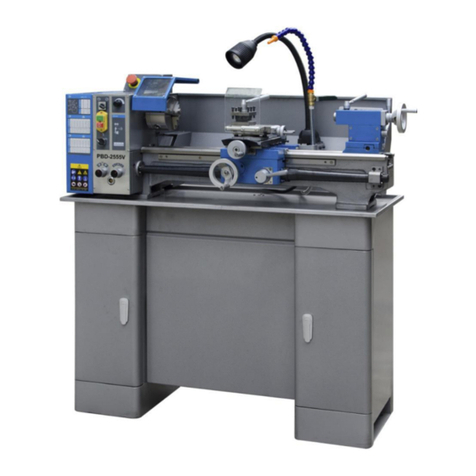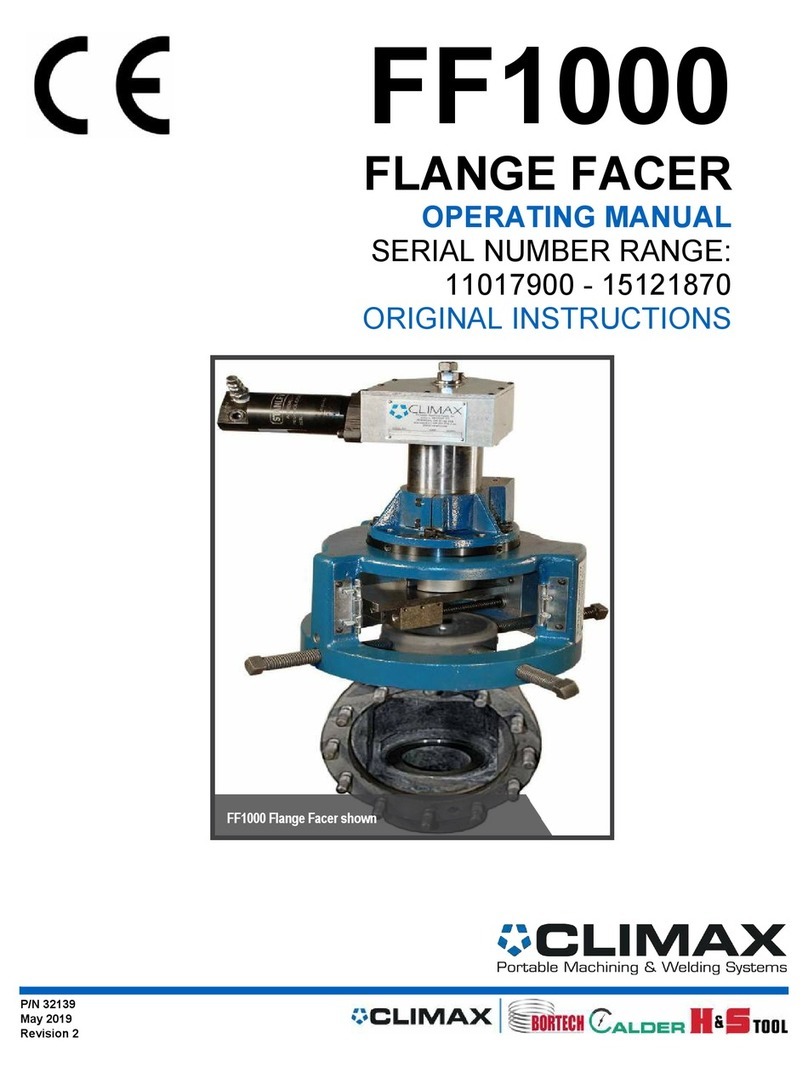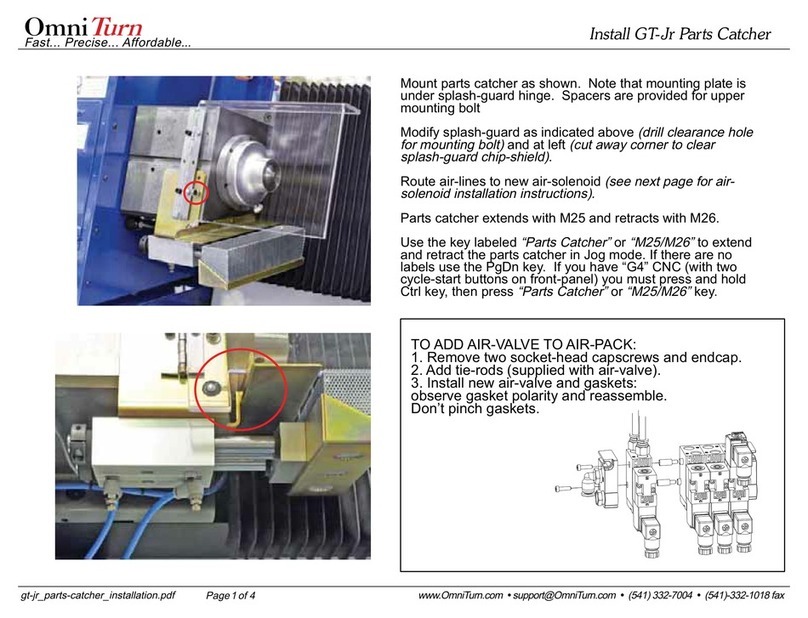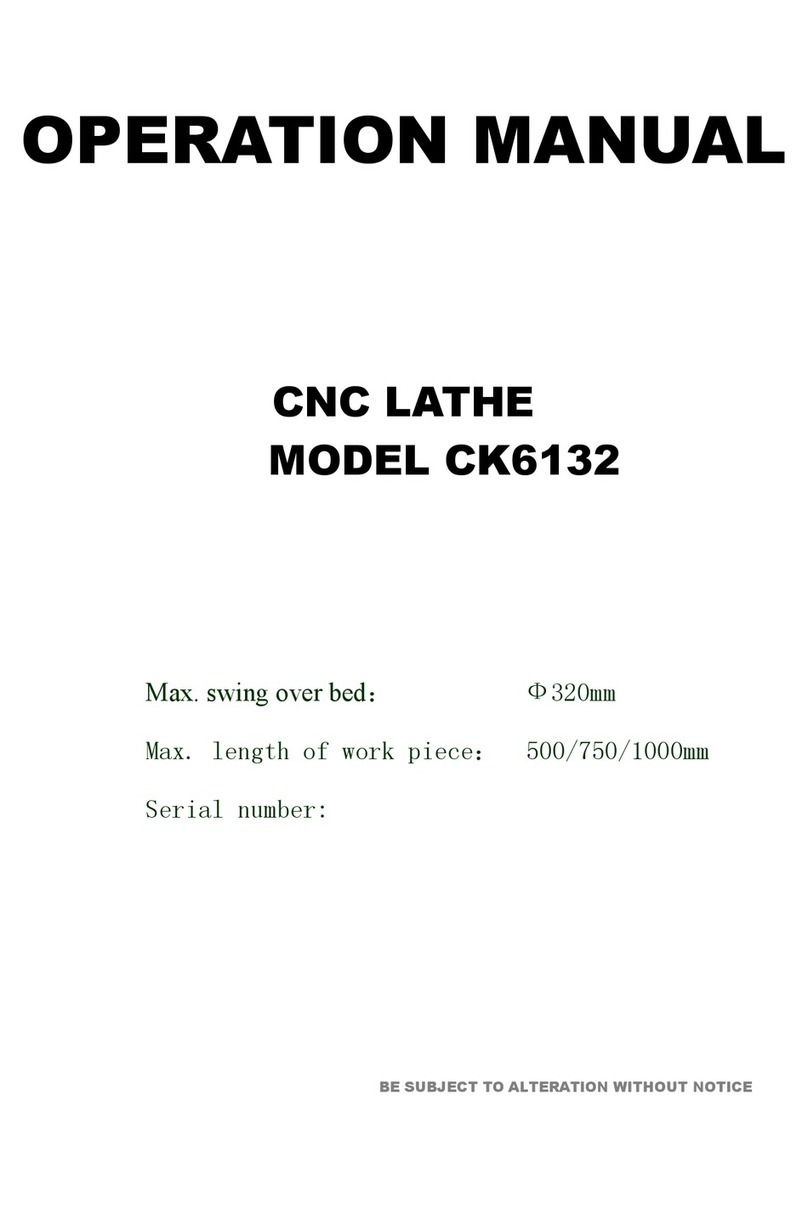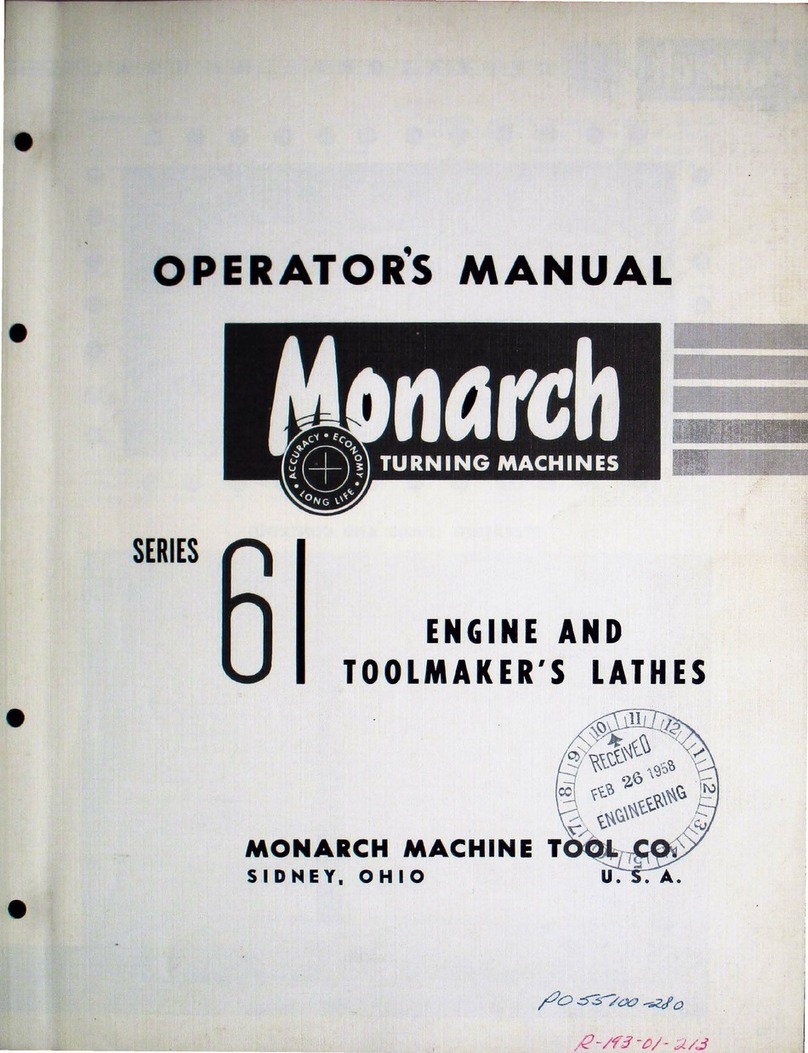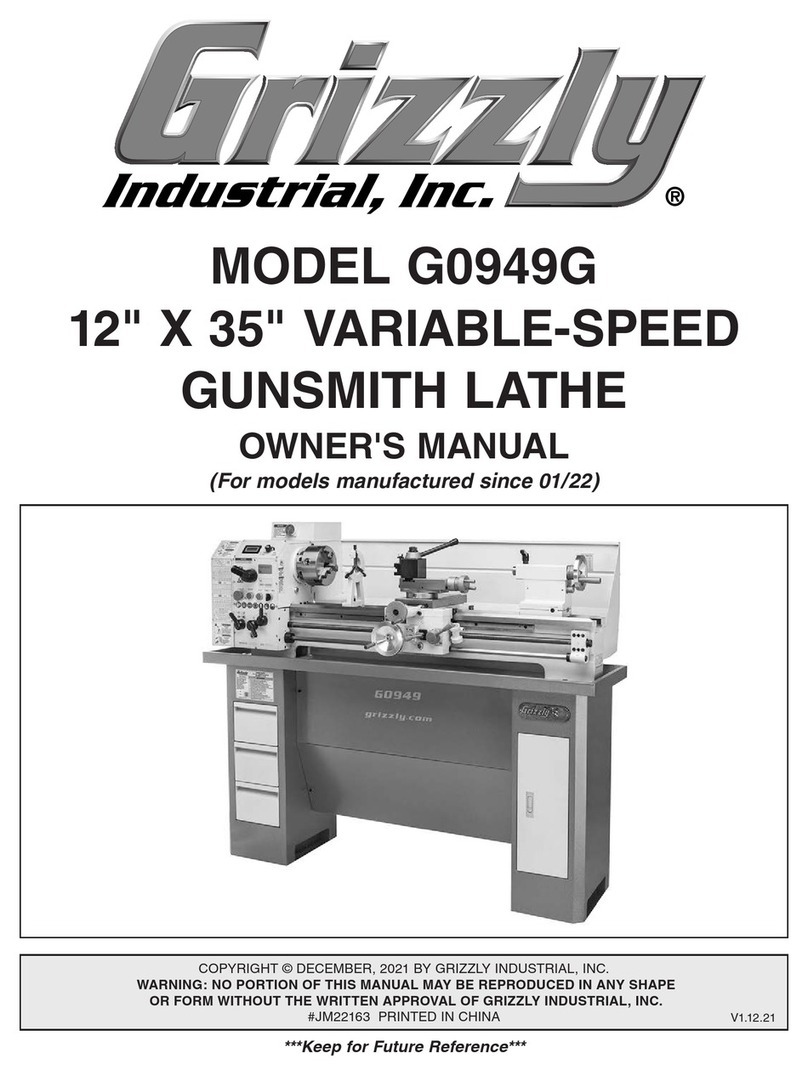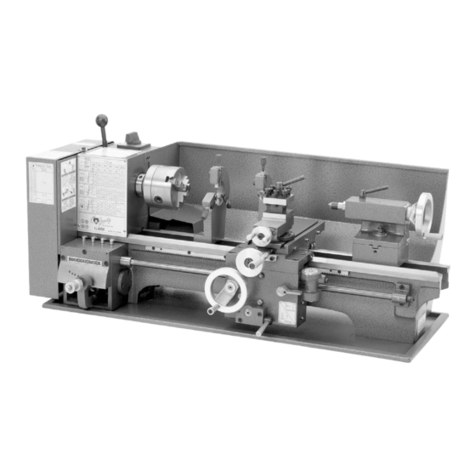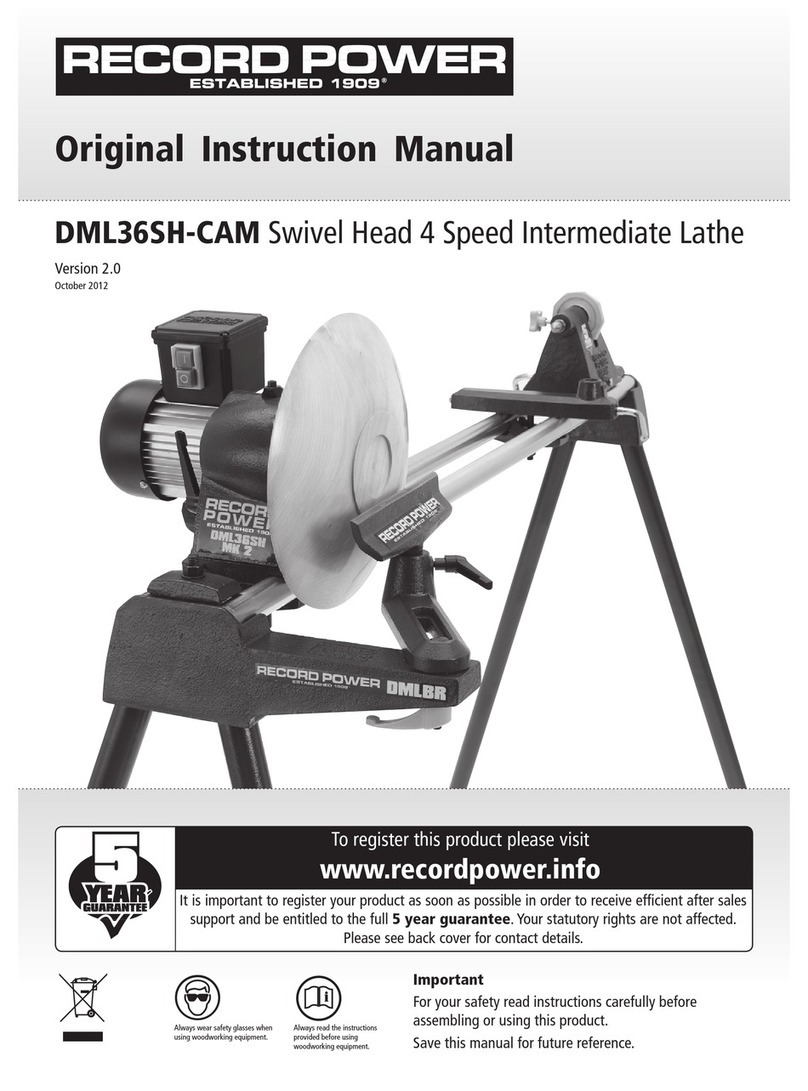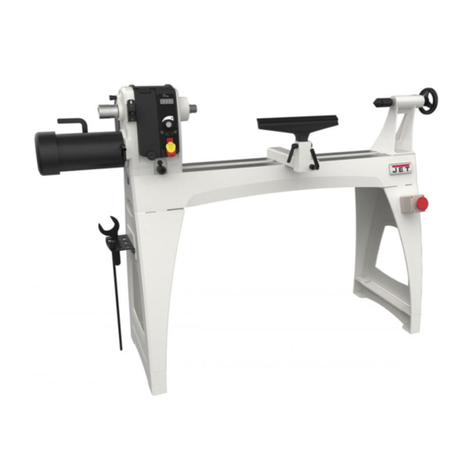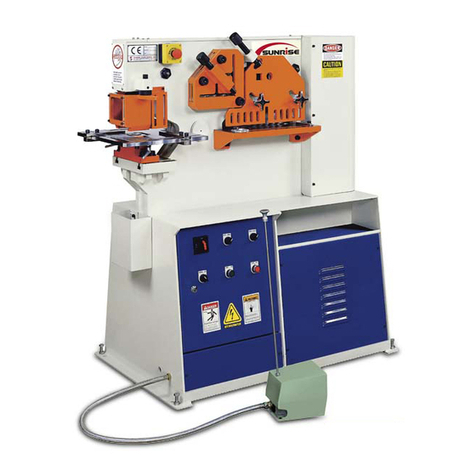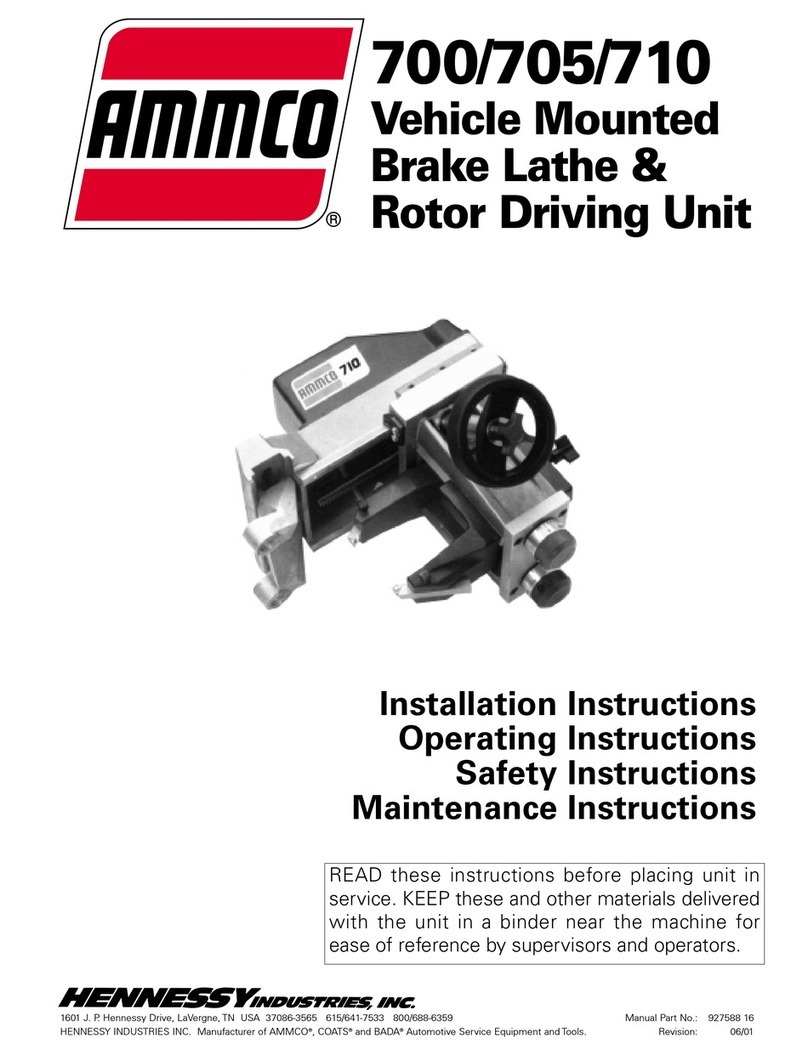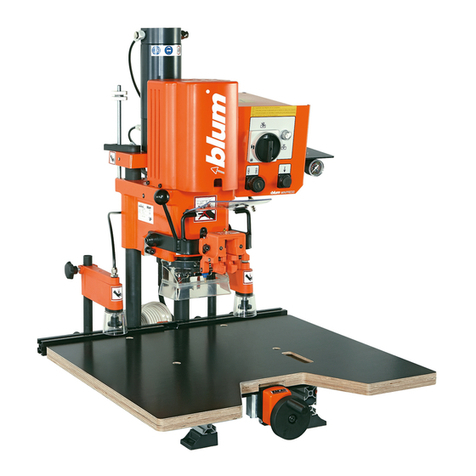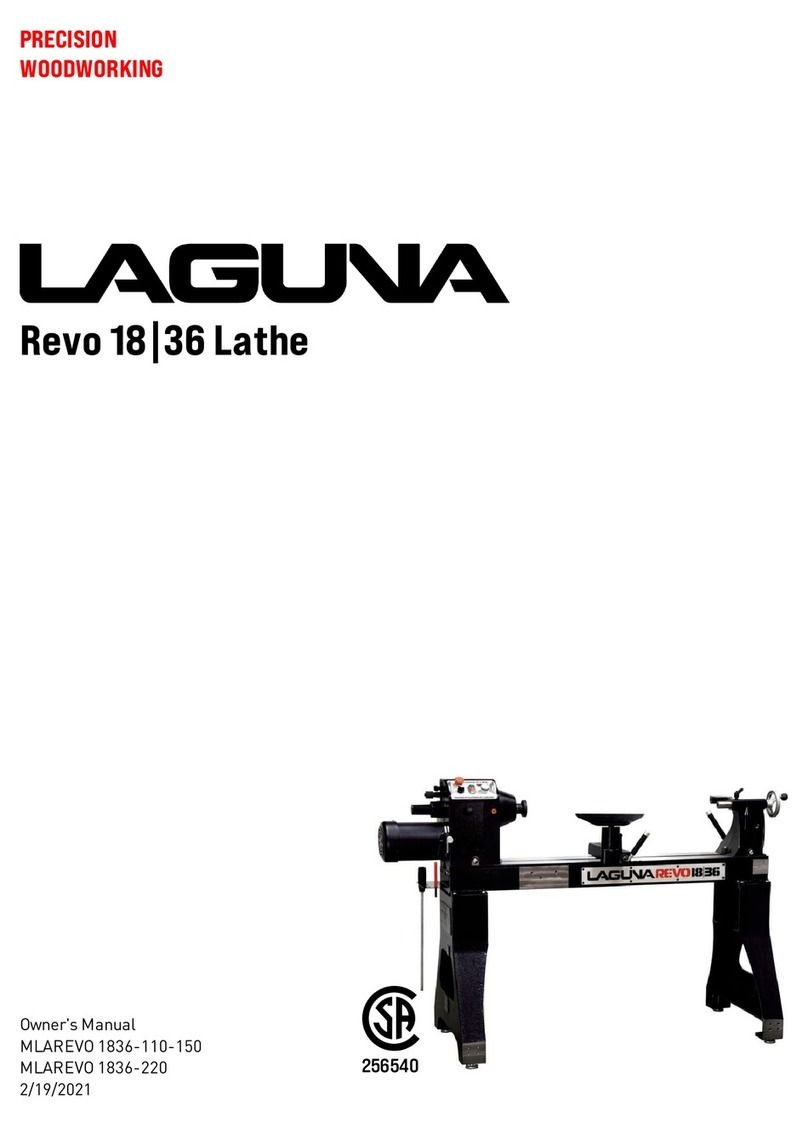FERREX DM600VARIO User manual

AFTER SALES SUPPORT 702030
1300 855 831
MODEL:
DM600VARIO
3
YEAR
WARRANTY
AU
Made in China
FERREX®is a registered trademark of ALDI Stores
DISTRIBUTED BY:
ALDI STORES
1 SARGENTS ROAD
MINCHINBURY NSW 2770
www.aldi.com.au
AU
ALDI guarantees that our exclusive brand products are developed to our
stringent quality specifications. If you are not entirely satisfied with this
product, please return it to the nearest ALDI store within 60 days from the
date of purchase, for a full refund or replacement, or take advantage of our
after sales support by calling the supplier’s Customer Service Hotline.
05/2023

User Manual
WOOD LATHE
DM600VARIO

Contents
Dok./Rev.-Nr. 702030_20220829
Overview ..................................................................................... 3
Package contents/part list .........................................................6
Explanation of Symbols .............................................................. 7
Introduction ................................................................................8
Layout ..........................................................................................9
Scope of delivery.........................................................................9
Intended use ..............................................................................10
Safety regulations...................................................................... 11
Attachment and operation........................................................17
Cleaning and maintenance........................................................21
Technical data ........................................................................... 22
Storage and transport .............................................................. 23
Disposal and recycling .............................................................. 23
Troubleshooting........................................................................ 24
Warranty Details........................................................................ 25
Repair and Refurbished Goods or Parts Notice ....................... 26

3
11 2 3 4 5 6 7 8 9 10
11
A
12
A
A
A13
14
21 4 3115

4
4
13
6
59
11
10

5

56
Package contents/part
list
1Motor unit, 1x
2Headstock drive centre, 1x
3Tool rest, 1x
4Tool support, 1x
5Centering pin, 1x
6Tailstock, 1x
7Machine bed, 1x
8Faceplate, 1x
9Wrench, 2x
10 Clamping lever tool rest, 1x
11 Fastening screws, 8 x
12 Warranty card
13 Instruction manual


Kapitelüberschrift
7
Explanation of Symbols
The use of symbols in this manual is intended to draw your attention to possible risks.
The safety symbols and the explanations that accompany them must be perfectly un-
derstood. The warnings in themselves do not remove the risks and cannot replace
correct actions for preventing accidents.
Warning! Potential danger to life, risk of injury or dam-
age to the tool when ignoring the instructions.
Before commissioning, read and observe the operating
instructions and safety instructions!
Wear safety goggles!
Wear hearing protection!
Do not wear long hair uncovered. Use a hair net.
Do not wear gloves.
Protection class II (double shielded)
Made in China
Complies with the Australian norms and standards.
336 Warranty period.
Warranty class.
Explanation of symbols

Kapitelüberschrift
8
Introduction
Congratulations on choosing to buy a FERREX®product.
All products brought to you by FERREX®are manufactured to the highest standards
of performance and safety, and as part of our philosophy of customer service and
satisfaction, are backed by our comprehensive 3 Year Warranty.
We hope you will enjoy using your purchase for many years to come.
Note:
According to the applicable product liability law the manufacturer of this device is
not liable for damages which arise on or in connection with this device in case of:
• improper handling,
• non-compliance with the instructions for use,
• repairs by third party, non-authorised skilled workers,
• installation and replacement of non-original spare parts,
• improper use.
Recommendations:
Read the entire text of the operating instructions prior to the assembly and operation
of the device.
These operating instructions are intended to make it easier for you to get familiar
with your device and utilise its intended possibilities of use.
The operating instructions contain important notes on how to work safely, properly
and economically with your machine and how to avoid dangers, save repair costs,
reduce downtime, and increase the reliability and working life of the machine.
In addition to the safety regulations contained herein, you must in any case comply
with the applicable regulations of your country with respect to the operation of the
machine.
Keep the operating instructions in a clear plastic folder to protect them from dirt and
humidity; store them near the machine. The instructions should be read and careful-
ly understood by each operator prior to using the machine. Only persons who have
been trained in the use of the machine and are aware of the related dangers and
risks should be allowed to use the machine. The local required minimum age must
be met.
In addition to the safety notes contained in these operating instructions and any
specific regulations in your country, the generally recognised technical rules for the
operation of identically constructed machines must be observed.
Introduction

Kapitelüberschrift
9
Layout (Fig. 1-5)
1. Motor unit
2. On/Off switch
3. Speed control
4. Headstock drive centre
5. Tool support
6. Tool rest
7. Centering pin
8. Counter nut
9. Tailstock
10. Handwheel
11. Clamping lever tailstock
12. Machine bed
13. Locking screw
14. Clamping lever for tool rest
15. Faceplate
A. Slotted hole
Scope of delivery
Motor unit 1x
Headstock drive centre 1x
Tool rest 1x
Tool support 1x
Centering pin 1x
Tailstock 1x
Machine bed 1x
Faceplate 1x
Wrench 2x
Clamping lever tool rest (pre-assembled) 1x
Fastening screws 8x
Warranty card 1x
Instruction manual 1x
Layout/Scope of delivery

Kapitelüberschrift
10
• Open the packaging and take out the equipment with care.
• Remove the packaging material.
• Check that all listed contents are present.
• Inspect the equipment and parts for any damage. Please contact the helpline if
anything is missing.
• If possible, keep the packaging until the end of the guarantee period.
• Read the operating instructions fully to familiarise yourself with the tool prior to
using it.
• Only use original accessories and spare parts. Spare parts are available by
contacting the helpline.
• Specify the part numbers when you contact the helpline.
m ATTENTION!
The device and packaging materials are not toys!
Children must not be allowed to play with plastic bags, film and small parts!
There is a risk of swallowing and suffocation!
Intended use
The machine is only designed for working on wood using a suitable turning tool.
The manufacturer’s safety, operation and maintenance instructions as well as the
technical data given in the calibrations and dimensions must be adhered to.
Relevant accident prevention regulations and other generally recognized safety and
technical rules must also be adhered to.
The machine may only be used, maintained or repaired by trained persons who are
familiar with the machine and have been informed about the dangers. Unauthorized
modifications of the machine exclude a liability of the manufacturer for damages re-
sulting from the modifications.
The machine is intended for use only with original spare parts and original tools from
the producer.
Any other use is considered to be not intended. The manufacturer excludes any liabil-
ity for resulting damages, the risk is exclusively borne by the user.
mPlease note that our equipment is designed for domestic DIY use, and has not
been designed for commercial, trade or industrial applications. Our warranty will be
voided if the equipment is used in commercial, trade or industrial businesses or for
equivalent purposes.
Scope of delivery/Intended use

Kapitelüberschrift
11
Safety regulations
General power tool safety warnings
mWARNING Read all safety warnings, instructions, illustrations
and specifications provided with this power tool. Failure to follow all
instructions listed below may result in electric shock, fire and/or serious
injury.
Save all warnings and instructions for future reference.
The term “power tool” in the warnings refers to your mains-operated
(corded) power tool or battery-operated (cordless) power tool.
1) Work area safety
a) Keep work area clean and well lit. Cluttered or dark areas invite
accidents.
b) Do not operate power tools in explosive atmospheres, such as
in the presence of flammable liquids, gases or dust. Power tools
create sparks which may ignite the dust or fumes.
c) Keep children and bystanders away while operating a power
tool. Distractions can cause you to lose control.
2) Electrical safety
a) Power tool plugs must match the outlet. Never modify the plug
in any way. Do not use any adapter plugs with earthed (ground-
ed) power tools. Unmodifiedplugs and matching outletswillreduce
risk of electric shock.
b) Avoid body contact with earthed or grounded surfaces, such as
pipes, radiators, ranges and refrigerators. There is an increased
risk of electric shock if your body is earthed or grounded.
c) Do not expose power tools to rain or wet conditions. Water enter-
ing a power tool will increase the risk of electric shock.
d) Do not abuse the cord. Never use the cord for carrying, pulling or
unplugging the power tool. Keep cord away from heat, oil, sharp
edges or moving parts. Damaged or entangled cords increase the
Safety regulations

Kapitelüberschrift
12
risk of electric shock.
e) When operating a power tool outdoors, use an extension cord
suitable for outdoor use. Use of a cord suitable for outdoor use re-
duces the risk of electric shock.
f) If operating a power tool in a damp location is unavoidable, use
a residual current device (RCD) protected supply. Use of an RCD
reduces the risk of electric shock. It is recommended that the tool al-
ways be supplied via a residual current device having a rated residu-
al current of 30 mA or less.
3) Personal safety
a) Stay alert, watch what you are doing and use common sense
when operating a power tool. Do not use a power tool while you
are tired or under the influence of drugs, alcohol or medication.
A moment of inattention while operating power tools may result in
serious personal injury.
b) Use personal protective equipment. Always wear eye protection.
Protective equipment such as a dust mask, non-skid safety shoes,
hard hat or hearing protection used for appropriate conditions will
reduce personal injuries.
c) Prevent unintentionalstarting. Ensuretheswitchisin theoff-po-
sition before connecting to power source and/or battery pack,
picking up or carrying the tool. Carrying power tools with your fin-
ger on the switch or energising power tools that have the switch on
invites accidents.
d) Remove any adjusting key or wrench before turning the power
tool on. A wrench or a key left attached to a rotating part of the pow-
er tool may result in personal injury.
e) Do not overreach. Keep proper footing and balance at all times.
This enables better control of the power tool in unexpected situa-
tions.
f) Dress properly. Do not wear loose clothing or jewellery. Keep
your hair and clothing away from moving parts. Loose clothes,
jewellery or long hair can be caught in moving parts.
g) If devices are provided for the connection of dust extraction and
collection facilities, ensure these are connected and properly
Safety regulations

Kapitelüberschrift
13
used. Use of dust collection can reduce dust-related hazards.
h) Do not let familiarity gained from frequent use of tools allow you
to become complacent and ignore tool safety principles. A care-
less action can cause severe injury within a fraction of a second.
4) Power tool use and care
a) Do not force the power tool. Use the correct power tool for your
application. The correct power tool will do the job better and safer at
the rate for which it was designed.
b) Do not use the power tool if the switch does not turn it on and
off. Any power tool that cannot be controlled with the switch is dan-
gerous and must be repaired.
c) Disconnect the plug from the power source and/or remove the
battery pack, if detachable, from the power tool before making
any adjustments, changing accessories, or storing power tools.
Such preventive safety measures reduce the risk of starting the pow-
er tool accidentally.
d) Store idle power tools out of the reach of children and do not al-
low persons unfamiliar with the power tool or these instructions
to operate the power tool. Power tools are dangerous in the hands
of untrained users.
e) Maintain power tools and accessories. Check for misalignment or
binding of moving parts, breakage of parts and any other condi-
tion that may affect the power tool’s operation. If damaged, have
the power tool repaired before use. Many accidents are caused by
poorly maintained power tools.
f) Keep cutting tools sharp and clean. Properly maintained cutting
tools with sharp cutting edges are less likely to bind and are eas-
ier to control.
g) Use the power tool, accessories and tool bits etc. in accordance
with these instructions, taking into account the working condi-
tions and the work to be performed. Use of the power tool for op-
erations different from those intended could result in a hazardous
situation.
h) Keep handles and grasping surfaces dry, clean and free from oil
and grease. Slippery handles and grasping surfaces do not allow for
Safety regulations

Kapitelüberschrift
14
safe handling and control of the tool in unexpected situations.
5) Service
a) Have your power tool serviced by a qualified repair person using
only identical replacement parts. This will ensure that the safety of
the power tool is maintained.
Operational Safety Instructions for the Wood Turning Lathe
• Familiarise yourself with the machine’s features and wood-turning
techniques before using the machine.
• Examine all workpieces for splits or knots. Glued joints must set com-
pletely before turning.
• Ensure that the workpiece is securely locked in position and all attach-
ments are secured.
• Before turning the machine ON ensure that the workpiece can rotate
freely by rotating it by hand.
• Keep your hands and fingers away from the rotating workpiece.
• Switch the machine OFF and wait until it has come to a full stop before
making any adjustments on the workpiece, tailstock, or tool rest.
• Maintenance, adjustment, calibration and cleaning may only be per-
formed with the motor turned off.
• The machine is designed for use with wood-turning chisels only.
• Always store away the wood-turning chisels safely before you leave
the workplace.
• Do not run the lathe without its covers and guards in place.
• Keep cutting tools sharp.
• Use the lowest speed when starting a new workpiece.
• Always stop the lathe at its slowest speed. If the lathe is run so fast
that it vibrates, there is a risk that the workpiece will be thrown or the
cutting tool jerked from your hands.
• Do not allow cutting tools to bite into the workpiece. The wood could
be split or thrown from the lathe.
• Always position the tool rest above the centre line of the lathe when
shaping a piece of stock.
• Before attaching a workpiece to the faceplate, always rough it out to
Safety regulations

Kapitelüberschrift
15
make it as round as possible. This minimizes the vibrations while the
piece is being turned. Always fasten the workpiece securely to the
faceplate. Failure to do so could result in the workpiece being thrown
away from the lathe.
• Use a brush or compressed air to remove wood shavings; never your
hands. The wood shavings will be sharp.
• The cutting tool must always be tight within the chuck and adjusted to
limit projection from the post. This will reduce the possibility of the tool
breaking or bending.
• Do not reach a cross the lathe while it is running.
• Only feed workpiece into a cutting tool against the direction of rota-
tion. The workpiece must always be rotating toward you.
• Do not leave the tool unattended when it is plugged into an electrical
outlet. Turn off the tool, and unplug it from its electrical outlet before
leaving.
• This product is not a toy. Keep it out of reach of children.
• Some dust created by power sanding, sawing, grinding, drilling, and
other construction activities, contains chemicals known to cause can-
cer, birth defects or other reproductive harm. Some examples of these
chemicals are:
-Lead from lead-based paints
-Crystalline silica from bricks and cement or other masonry prod-
ucts
-Arsenic and chromium from chemically treated lumber
• Your risk from these exposures varies, depending on how often you
do this type of work. To reduce your exposure to these chemicals:
work in a well ventilated area, and work with approved safety equip-
ment ,such as those dust masks that are specially designed to filter out
microscopic particles.
• People with pacemakers should consult their physician(s) before use.
Electromagnetic fields inclose proximity to heart pacemaker could
cause pacemaker interference or pacemaker failure. In addition, peo-
ple with pacemakers should:
-Avoid operating alone.
• Properly maintain and inspect to avoid electrical shock.
• The warnings, precautions, and instructions discussed in this user
manual cannot cover all possible conditions and situations that may
Safety regulations

Kapitelüberschrift
16
occur. It must be understood by the operator that common sense and
caution are factors which cannot be built into this product, but must
be supplied by the operator.
Additional safety instructions for the use of faceplates
• Ensure that the faceplate is the appropriate size to support the work-
piece.
• Ensure that the workpiece is securely fastened to the faceplate.
• Rough cut the workpiece as close as possible to the final shape before
mounting onto a faceplate.
• Only use scraping chisels for faceplate turning. Cutting chisels can
easily be torn out of your hands.
• Pay attention that the woodturning chisel cannot interfere with the
holding screws at the finished dimensions of the workpiece.
Remaining hazards
The machine has been built using modern technology in accord-
ance with recognized safety rules. Some remaining hazards, how-
ever, may still exist.
• Only process selected woods without defects such as: Branch knots,
edge cracks, surface cracks. Wood with such defects is prone to splin-
tering and hazardous.
• Wood which is not correctly glued can explode when being processed
due to centrifugal force.
• Trim work piece to a rectangular shape, center and correctly secure
before processing. Unbalanced work pieces can be hazardous.
• Injuries can occur when feeding work pieces if tool supports are not
correctly adjusted or if turning tools are blunt. Sharp turning tools
which are free of defects are necessary for professional turning.
• Long hair and loose clothing can be hazardous when the work piece
is rotating. Wear personal protective gear such as a hair net and tight
fitting work clothes.
• Saw dust and wood chips can be hazardous. Wear personal protective
gear such as safety goggles and a dust mask.
• The use of incorrect or damaged mains cables can lead to injuries
caused by electricity.
• Even when all safety measures are taken, some remaining hazards
Safety regulations

Kapitelüberschrift
17
which are not yet evident may still be present.
• Remaining hazards can be minimized by following the instructions in
“Safety Precautions“, “Proper Use“ and in the entire operating manual.
• Before carrying out any adjustment or maintenance work, switch off
the device and disconnect the mains plug.
Exceptional and emergency situations
In case of an injury follow the following procedure:
Conduct a first-aid procedure adequate to the injury and summon qua-
lified medical attendance as quickly as possible. Protect the injured per-
son from further harm and calm them down.
If you seek help, state the following pieces of information:
1. Accident site ,
2. Accident type,
3. Number of injured persons,
4. Injury type(s)
Attachment and operation
mWarning! Risk of injury!
Prepare the workplace where you intend to place the electrical power tool. Provide
enough space to ensure safe and trouble-free operation. The power tool is designed
for working in enclosed rooms and has to be installed on level and firm ground.
mImportant! Pull out the power plug before carrying out any maintenance,
resetting or assembly work on the device!
Recommendation: Connect the appliance to a power socket with a residual current
circuit breaker of rated residual current no more than 30 mA.
Fixation of the machine (Fig. 1)
Before operation, the device must be screwed to a workbench, undercarriage or sim-
ilar. Use the slotted holes (A) and the delivered fastening screws for this purpose.
Installing the tool rest (Fig. 1; 4)
1. Plug the tool rest (6) into the hole in the tool support (5).
2. Fasten the tool rest (6) at the desired height using the locking screw (13).
Safety regulations/Attachment and operation

Kapitelüberschrift
18
Setting the tool rest (Fig. 1; 4)
1. The height of the tool rest (6) can be set by loosening the locking screw (13).
2. In order to set the length of the tool rest (6), loosen the clamping lever for tool rest
(14). The tool rest (6) must be driven as close as possible to the workpiece without
touching it.
3. Retighten the clamping lever for tool rest (14).
Adjustment of the tailstock (Fig. 1; 5)
1. Loosen the clamping lever (11) for the tailstock (9) in order to set the distance be-
tween the tailstock (9) and the headstock drive centre (4).
2. To adjust the clamping pressure use the handwheel (10) and secure it with the
counter nut (8).
Warning! Make sure that the tool rest (6) is tightened securely and cannot turn
in towards the workpiece.
Securing the workpiece on the headstock drive centre (Fig. 1)
1. Locate the centre of the workpiece by accurately drawing diagonal lines on each
end. The intersection point of these two lines will indicate the centre of the work-
piece.
2. At the end of the workpiece, produce an approx. 2mm deep saw cut along the
diagonal, in order to receive the headstock drive centre (4).
3. Use a wood mallet (not supplied) to drive the headstock drive centre (4) into the
point where the diagonal cuts across the end of the workpiece. Take care to pro-
tect the threaded end of the headstock drive centre (4) so that no object damages
the thread.
4. Cut the corners off the workpiece if the diameter of the ends is greater than 5 cm x
5 cm to make turning easier and safer.
5. Measure the combined total length of the workpiece with the headstock drive
centre (4) and centering pin (7) on each end.
6. Loosen the clamping lever for the tailstock (9) and set the distance between the
headstock drive centre (4) and the centering pin (7), such that a slightly greater
distance is obtained than the measured total length of the workpiece.
7. Tightly screw the headstock drive centre (4) with workpiece onto the centering
pin (7) by the hand wheel (10).
8. Once positioned fasten the counter nut (8) against the tail stock (9).
9. Set the tool support (5) with tool rest (6) approx. 3 mm away from the workpiece.
Caution: Before starting the machine test the setup by rotating the workpiece
by hand to ensure that there is enough clearance all the way around and that it
Attachment and operation
Table of contents
